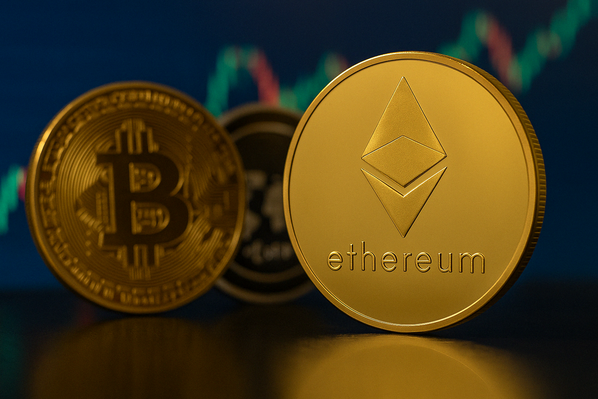TLDR
- Bitcoin ETFs saw $903M in outflows last week, ending a month-long inflow trend.
- Ethereum ETFs lost $796M in one week, marking their worst week since launch.
- Institutional investors reduced crypto ETF exposure amid inflation fears.
- New ETFs tied to Solana and XRP are gaining traction as demand shifts.
Spot Bitcoin and Ethereum exchange-traded funds (ETFs) in the United States recorded over $1.7 billion in outflows last week. The sharp reversal came after several weeks of consistent inflows. Growing concerns around inflation, slower global growth, and uncertainty over monetary policy have pushed institutional investors to reduce their exposure. Meanwhile, attention is now shifting toward alternative tokens such as Solana and XRP.
Institutional Investors Cut Exposure Amid Market Uncertainty
Last week, spot Bitcoin ETFs in the US saw net outflows of $903 million, ending a month of consistent inflows. Data from SoSoValue confirms that this pullback came as Bitcoin’s price fell more than 8% during the same period. This decline followed growing unease over rising inflation and slowing economic activity across major global markets.
Ethereum ETFs faced even larger losses, with net redemptions totaling $796 million. This marked the highest weekly outflows since these products launched earlier in 2025. Investors cited growing concern about the broader macroeconomic environment, which has made riskier assets less appealing. The Federal Reserve’s uncertain interest rate path has also played a part in the retreat.
According to analysts, many institutional allocators are adjusting their strategies to reduce exposure to volatility. Crypto assets, especially through ETFs, are often the first to be removed from portfolios during such shifts.
Ethereum ETFs Register Largest Weekly Outflow Since Launch
Ethereum ETFs experienced widespread redemptions, with all nine US-listed products showing negative flows. The $796 million withdrawn over the week was the largest since Ethereum ETFs launched earlier this year. This retreat mirrored the downturn seen in Bitcoin products, although Ethereum’s losses were more pronounced.
SoSoValue data indicates that institutional investors who previously showed growing interest are now stepping back. The current environment, marked by slow economic growth and inflation pressure, has lowered investor appetite for digital asset exposure. Many are adopting a defensive approach in response to broader financial market conditions.
Some analysts suggest that Ethereum’s technical price weakness also played a role in reducing ETF demand. However, the main drivers remain macroeconomic and policy-related concerns.
Demand Shifts Toward Solana and XRP ETFs
While Bitcoin and Ethereum ETFs recorded major outflows, new ETFs tied to alternative assets such as Solana and XRP are attracting fresh capital. This shift indicates a selective rotation rather than a full exit from the crypto space. Investors are still seeking exposure to digital assets but are exploring beyond the two largest cryptocurrencies.
Several newly launched ETFs focused on Solana and XRP have seen moderate inflows in recent days. This trend reflects a change in strategy, with institutions now showing interest in diversifying within the crypto market using different assets. These moves come as firms experiment with underrepresented tokens that may offer growth potential despite market volatility.
Though total inflows into these new products remain smaller compared to Bitcoin and Ethereum funds, they show a developing trend of cautious reallocation.
Defensive Strategies Rise Amid Market Pressure
Institutional strategies have become more conservative over recent weeks. Many investors are preparing for possible continued market weakness. CryptoQuant data shows that Bitcoin treasury firms are under stress, especially those raising capital through PIPE deals, as their share prices fall toward discounted levels.
With this pressure building, institutional participants are reassessing the role of crypto ETFs in their portfolios. The recent $1.7 billion in outflows reflects not only market volatility but also a shift in institutional sentiment. Investors are avoiding broad exposure to digital assets and are now moving toward more focused, smaller positions.
This cautious stance is expected to continue as macroeconomic challenges remain unresolved. Investors will likely keep watching inflation trends and central bank decisions closely before returning to riskier assets.






